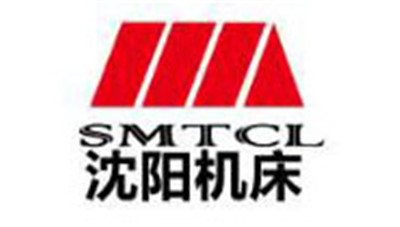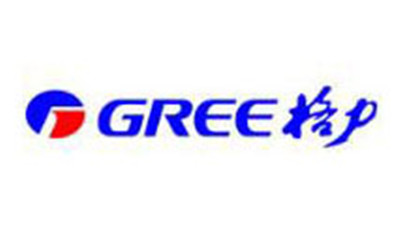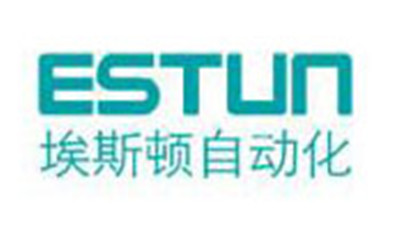Innovative Solutions for Converting 120v To 12v Transformer Power Needs
Table of Contents
- Innovative Technologies in Transformer Design for 120V to 12V Conversion
- Comparative Analysis of Transformer Efficiency Ratings for Voltage Conversion
- Key Components in 120V to 12V Transformer Circuits and Their Roles
- Regulatory Standards Impacting Transformer Manufacturing and Performance
- Future Trends in Low-Voltage Power Solutions and Sustainable Practices
- FAQS
- Conclusion
- Related Posts
In today's fast-changing tech world, the need for reliable power conversion solutions has never been more important. With so many electronic gadgets needing different voltage levels to work properly, the demand for top-quality transformers—like those converting 120V to 12V—is really picking up. Industry reports suggest that the global transformer market is set to grow quite a bit, thanks largely to advances in renewable energy and smarter grid tech.

Dezhou Xinping Electronics Co., Ltd., a high-tech company founded back in March 2001, has been focused on making precision electronic transformers that meet every tough industry standard. They’re especially geared towards innovative solutions for that 120V-to-12V power need, so they’re well-positioned to serve a bunch of different applications—helping ensure your modern gadgets stay efficient and reliable.
Innovative Technologies in Transformer Design for 120V to 12V Conversion
Switching from 120V to 12V power systems is becoming more and more important across different industries, especially with the surge in energy-efficient tech and renewable energy sources. Luckily, recent innovations in transformer design are opening up some pretty exciting new possibilities for making this conversion smoother and more effective. For example, a report by the International Energy Agency points out that smart transformers can cut energy losses by up to 30%. That’s a big deal because it means lower operating costs and a lighter footprint on the environment.
One of the coolest developments lately is the use of switching transformers. They operate at high frequency, which helps reduce their size and weight while boosting efficiency. When you pair these with modern materials like amorphous steel, they’re even better—they show less core loss and provide a more stable, reliable power supply. In fact, a study by IEEE found that some of these designs can reach efficiency ratings above 95%, which makes them perfect for companies serious about saving energy.
A few tips: When choosing a transformer to go from 120V down to 12V, make sure to think about your load needs and how well it can handle heat. It’s also smart to double-check that the transformer meets all the relevant industry standards—this helps keep things safe and reliable. And don’t forget, regular check-ups and maintenance can really extend your transformer’s life and keep it working at its best.
Comparative Analysis of Transformer Efficiency Ratings for Voltage Conversion

So, if you're trying to convert 120V down to 12V, picking the right transformer is kinda key to making sure everything runs smoothly and efficiently. The efficiency rating of a transformer really makes a difference—it tells you how much of the input energy gets turned into usable power. A high-efficiency transformer wastes less energy as heat, which is super important, especially if you’re trying to cut down on power usage or just want things to work better in the long run.
There are a few things that influence how efficient a transformer is, like the type of core material, how the winding is designed, and what kind of load it's dealing with. For example, toroidal transformers are pretty popular—they’re small and tend to be more efficient because they lose less energy in the process. Plus, modern designs often use some pretty advanced materials and manufacturing tricks that give them an extra boost. When you’re comparing different models, it’s a good idea to check their efficiency ratings under real-world conditions, since loads fluctuate and that can impact how well they actually perform. Knowing all this stuff can really help you pick out the best transformer for converting 120V to 12V, making sure everything’s running at its best and saving energy at the same time.
Key Components in 120V to 12V Transformer Circuits and Their Roles
When you're working with converting 120V to 12V using a transformer, it’s really helpful to get a good grasp of the main components and what they do. Honestly, understanding the role of each part is key if you want your power setup to run smoothly and efficiently. Usually, a typical circuit includes transformers, rectifiers, and some sort of filtering system. Industry chatter suggests that transformers are responsible for about 80% of the energy efficiency, making them absolutely crucial if you’re trying to cut down on losses. Rectifiers, which are often built as bridge circuits, handle the job of turning AC into DC pretty effectively. Then, you’ve got capacitors in the filtering stage that help even out any voltage ripples. Picking the right components isn’t just about specs — it can really make or break the overall performance and durability of your setup.
A quick tip: when choosing a transformer, don’t just look at the voltage rating—think about the load needs too, so everything runs smoothly without overheating or underperforming. Plus, going for high-efficiency rectifiers can seriously cut down on heat, which means your circuit will last longer. Oh, and safety should never be overlooked — make sure to add fuses or circuit breakers to dodge any overload mishaps.
And here’s a little insider info: recent studies show that using advanced materials in transformer windings can boost efficiency by another 10-15%. That might seem small, but if you’re pushing for super energy-efficient projects, that difference can be a game-changer.
Power Conversion Efficiency for 120V to 12V Transformers
Regulatory Standards Impacting Transformer Manufacturing and Performance
When you're talking about transformers that convert 120V to 12V, following the rules and standards is super important. Organizations like IEEE and UL set pretty strict guidelines about how these transformers should be designed and how they operate. It’s kind of like safety first — making sure they work properly without overheating or causing electrical shorts is key to keeping everyone safe. And these standards aren’t just about safety; they also push manufacturers to get a bit more creative. Nowadays, companies are trying out new materials and tech to make transformers more efficient and cut down on energy waste. For example, using amorphous steel cores can really reduce those no-load losses, and smart monitoring systems can give real-time performance updates, which helps with maintenance before big problems happen. So, sticking to these standards isn’t just about safety — it actually helps drive innovation, making transformers better, greener, and more reliable overall.
Innovative Solutions for Converting 120v To 12v Transformer Power Needs - Regulatory Standards Impacting Transformer Manufacturing and Performance
| Dimension | Specification | Regulatory Standard | Comment |
|---|---|---|---|
| Output Voltage | 12V | IEC 61558 | Safety standard for transformers |
| Input Voltage | 120V | UL transformers | Meets North American safety standards |
| Power Rating | 100W | EN 60076 | Standard for power transformers |
| Efficiency | >85% | DOE Level VI | Energy efficiency standard |
| Weight | 2.5 kg | RoHS | Materials compliance standard |
Future Trends in Low-Voltage Power Solutions and Sustainable Practices
As more and more folks are looking for low-voltage power solutions, we're seeing some pretty exciting innovative approaches popping up in the energy world. According to a recent report from the International Energy Agency, worldwide investment in these low-voltage techs could hit around $5 billion by 2025. This push is mainly driven by the shift toward renewable energy and a big focus on energy efficiency. It really shows how crucial it’s become to find better ways to switch from those 120V supplies to 12V options. By using cutting-edge transformers and smart systems, companies can seriously cut down on power use and save money in the long run.

If you're thinking about optimizing your low-voltage setups, a few tips might help. For starters, swapping in energy-efficient components makes a difference. Also, smart controllers that adjust power based on real-time data can do wonders for performance—and they help reduce waste, which is always a win. Plus, investing in modular transformer systems that can easily adapt to changing power needs gives you more flexibility and makes scaling up or down way easier.
Looking ahead, sustainable practices are shaping the future of these low-voltage solutions. The World Economic Forum points out that companies who bring eco-friendly tech into their power systems often see about a 20% drop in energy costs over five years. Embracing smart grids and renewable sources isn’t just good for the planet; it also helps keep costs down and reliability up, paving the way for a greener, smarter energy future.
FAQS
: Key regulatory standards include guidelines set by the Institute of Electrical and Electronics Engineers (IEEE) and Underwriters Laboratories (UL) which dictate design and operational efficiency.
Adherence ensures safety by preventing hazards such as overheating and electrical short circuits while ensuring proper functionality.
Regulations encourage manufacturers to invest in advanced materials and technologies, such as amorphous steel cores and smart monitoring systems, to improve efficiency and reduce energy loss.
There is a notable shift towards renewable energy and energy efficiency, with projected investments in low-voltage technologies reaching $5 billion by 2025.
Organizations can integrate energy-efficient components and smart controllers to adjust power usage based on real-time data, enhancing performance and sustainability.
Companies that incorporate eco-friendly technologies can see up to a 20% reduction in energy costs over five years.
Modular systems offer flexibility and scalability, allowing organizations to adapt to varying power needs efficiently.
Smart grid technology, along with renewable energy sources, is crucial for reducing costs and enhancing reliability in energy management.
This transformation can lead to significant reductions in power consumption and operational costs, benefiting industries aiming for efficiency.
These systems provide real-time performance data that facilitates predictive maintenance, ensuring transformers operate at optimal efficiency.
Conclusion
Lately, we've seen some pretty exciting progress in the world of 120V to 12V transformers. It’s like the tech behind these devices keeps getting better—focusing on making them more efficient and fine-tuning the main components to ensure they do their job reliably across different uses. Companies like Dezhou Xinping Electronics are really leading the charge here, using cutting-edge manufacturing methods to produce high-precision transformers that can keep up with the changing power needs. It’s pretty impressive to see how quickly things are moving!
And, of course, regulatory standards are a big part of it all. They help make sure that the transformers are safe to use and environmentally friendly, which is super important nowadays. As folks keep pushing for greener options, the outlook for these transformers looks bright—especially as new, smarter designs come into play for both industrial setups and everyday gadgets. It’s an exciting time for power solutions, no doubt.
Related Posts
-

Ultimate Checklist for Selecting the Best Air Core Inductor for Your Projects
-

How to Choose the Right Substation Transformer for Your Energy Needs Based on Load Calculation
-

Ultimate Guide to Mastering Lead Transformers for Business Growth
-

The Future of Efficient Power Solutions with 30 Kva Transformers
-

Innovative Solutions for Optimal 33kv Transformer Performance
-

Understanding the Versatility of 10kva Transformer Applications in Various Industries
Blog Tags:

















